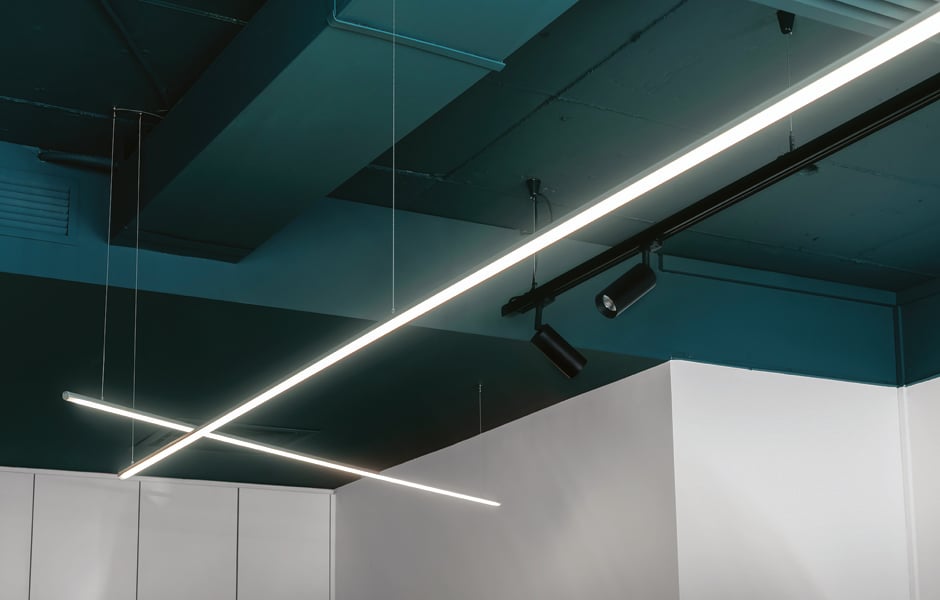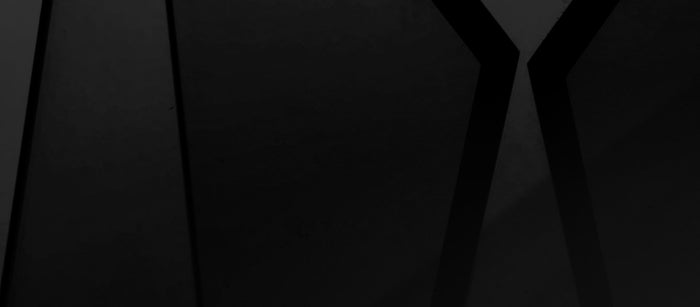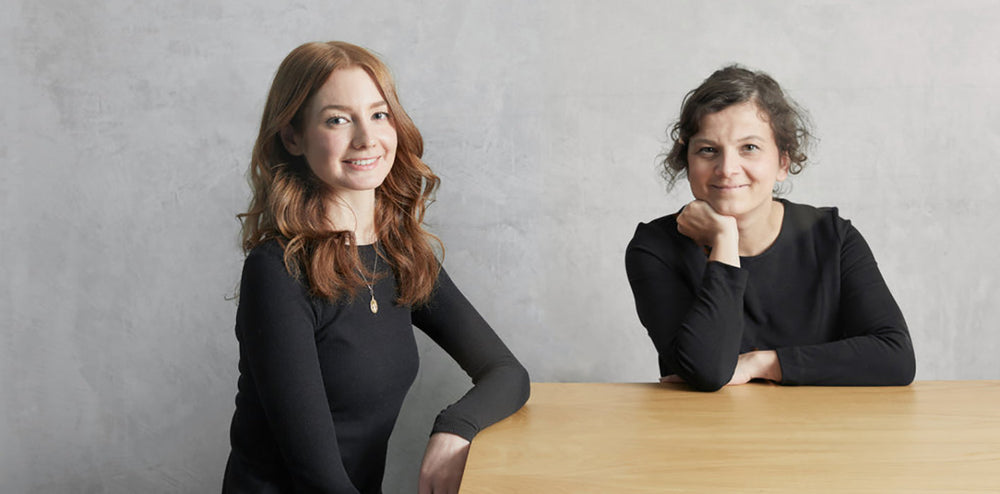
Design studio Pierce Widera is interior designer Amy Pierce and architect Nat Widera, who met while working together at Chris Connell Design. Since opening their own office they have completed a diversity of projects, from a teeny tiny 35 square metre café, to a co-working space and a multi-level hospitality project. more space caught up with the talented duo to talk design, friendship and the influences that shape their practice.
Newly awarded design studio Pierce Widera combines the talents of interior designer Amy Pierce and architect Nat Widera, who met while working together at Chris Connell Design. With a trove of experience between them working for some of Melbourne’s best and busiest studios, it has been an epic year for the duo who since opening their own office have completed seven projects in succession, from the teeny tiny 35 square metre Nigel café in Hawthorn, to the Communico co-working space in Cremorne, and the multi-level fitout for Cheek restaurant and Peaches bar and rooftop in downtown Melbourne.
Chatting with Amy and Nat, it becomes clear just how in sync the two designers are. Regularly finishing each other’s sentences (they jokingly describe themselves as an old married couple), the pair also spend the start of each day carpooling to work together. It’s their time for discussing projects and dealing with emails (they alternate the driving), and that efficiency says everything about their approach to design as well. more space caught up with Amy and Nat to learn about their design process, the influences that shape their practice, and how important it is to mix it up when it comes to the types of projects they take on.
more space: Please tell me a little about yourselves, what path did you each take to get to where you are today?
Nat Widera: I’m originally from Germany and my background is in architecture. I came to Australia as a student as part of a study abroad program at RMIT and I've been very fortunate to have had some incredibly talented mentors during that early stage of my career. I worked for Robert Simeoni, Bruce Trethowan and then Chris Connell where I met Amy. We worked alongside one another for quite some time before we started the business, so we knew we would be a good team.
Amy Pierce: Before Nat and I met, I was working on commercial and educational projects, and also small scale residential. Working at Chris Connell Design enhanced my love of interiors. I was responsible for projects from design to construction and the projects were incredibly wide range.
What makes you a good match?
AP: Number one, we get along really well, it’s just seamless. We spend day in, and day out with each other. We sat next to each other for four years prior to doing our own thing, so we knew the dynamic would work. Secondly, Nat and I always say that we are a yin and yang fit. One person’s strength complements the other.
NW: We have two different backgrounds. Mine is in architecture and Amy interiors. So that forms a really good partnership.
What does a day in the life of Pierce Widera look like?
NW: Amy and I actually carpool together (laughter). So we start each day with a meeting in the car. We discuss what the day will look like and what we want to achieve, and review all the emails we received the night before. You share the driving?
NW: Yes, we actually alternate. One day on and one day off (laugher). So we get into the office, have a coffee and we write a 'to do' list because we love ticking boxes! We usually prefer working together on a project because it's just a bit more efficient for us with our strengths and preferences.
AP: Today though we split up a bit. I went with a client to help choose the stone for their kitchen and Nat stayed in the office.
NW: I was working on a feasibility study for a potential new job. We are in constant dialogue so we both know what the other is doing.
AP: Then when we document a project together, we'll divide it up and tackle it as a team. So there's a bit of both of you in every project?
AP: Oh yeah, it is absolutely 50: 50. NW: For sure.
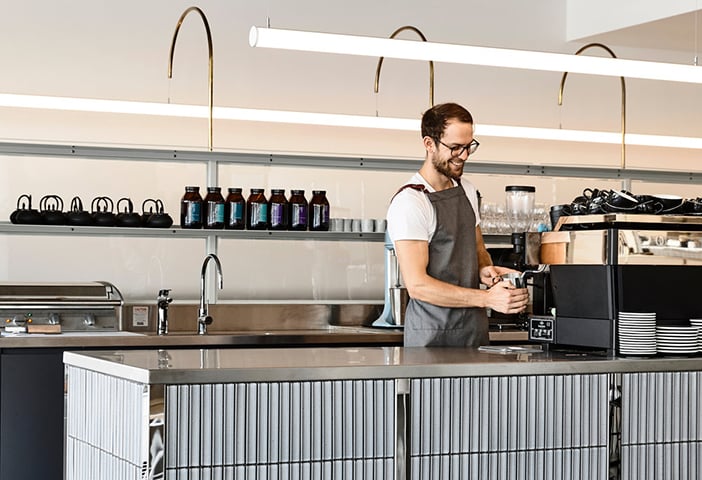
The Bicycle Thief café designed by Pierce Widera was the first large project for the practice. Photos © Derek Swalwell

How would you describe the work and the skills you both bring to the mix?
AP: Nat’s strengths are very architecture-based and all about the fine detailing.
NW: It’s a healthy mix and we both have our own strengths and weaknesses Amy’s materials and finishes knowledge is amazing and I prefer the nitty gritty detailing.
AP: At the concept design stage Nat will look at the layout, while I look at the aesthetic of what we are trying to achieve. I will put together materials and finishes and together we'll start working on a 3D model, so we are coming at it from both ends. Once we have agreed on what it is going to look like we divide up the documentation.
NW: We often joke that we are an old married couple.
AP: And that we finish each others sentences as well! (laughter).
How do you approach each project?
AP: Once we get the scope of works from the client, we make sure that we're ticking all their boxes and then we definitely try to push it further.
NW: We want to be innovative but at the same time we want to offer an experience that works. We mostly work with existing structures and we want to keep a connection to the building’s heritage so it’s often a multi-faceted approach.
When nothing is hidden everything is exposed so every detail has to be resolved so precisely.
NW: Absolutely. We actually appreciate those tricky little details. What have been some of the more difficult details you have resolved?
NW: For the Sister of Soul café, we were working inside an existing heritage building. We had to resolve how to approach that history and how to develop really clean lines in the design. You can still see the lining boards and the high ceiling but we introduced louvres to bring the scale of the ceiling down a bit. It is the little things that actually make design work.
There appears to be a move towards interiors where the structure takes more of a leading role in shaping the interior.
AP: We do like to keep our materiality quite limited. To work with a handful of materials and apply them in different ways. Nothing too over the top.
NW: We want to achieve a timelessness so it’s not about Instagram but more long lasting. Hospitality is challenging, not just because it’s fast-paced but also because you have to appeal to an audience beyond the client.
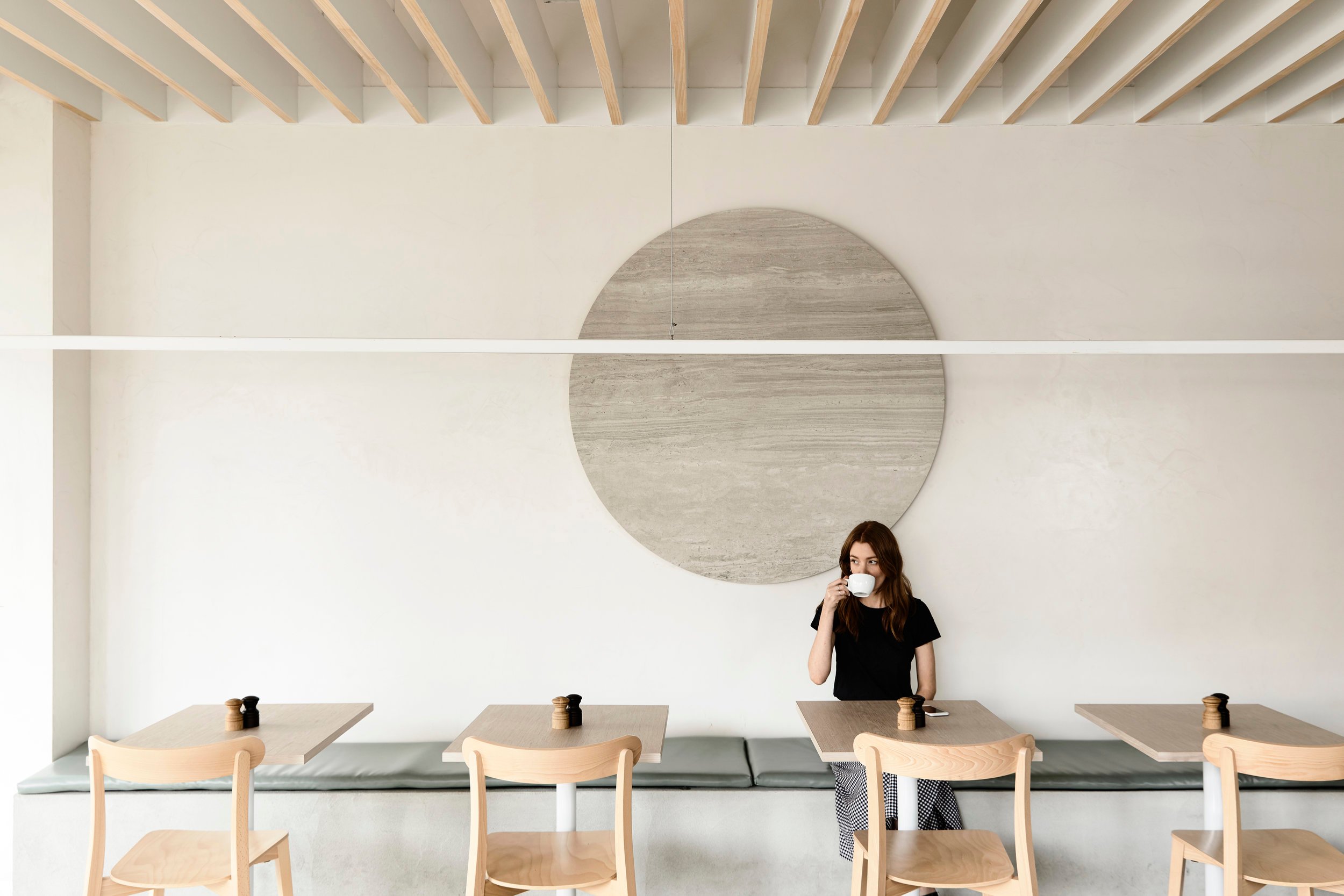
The Sister of Soul café took cues from the local heritage area while louvres were hung from the ceiling to bring down the scale of the interior. Photo © Derek Swalwell
"Amy and I actually carpool together. So we start each day with a meeting in the car. We discuss what the day will look like and what we want to achieve, and review all the emails we received the night before."
Nat Widera, Pierce Widera
Do you get a lot of feedback?
NW: Yes especially in hospitality because it is so exposed. The feedback is honest and that can be brutal. Generally people do like our spaces and I think that’s because you can experience our spaces in a few different ways.
For Bicycle Thieves we designed a communal table but also some high benches and banquet seating and I think people appreciate that. So many people eat out by themselves so having options takes away the stress.
NW: We actually had that joke when we were working on Bicycle Thieves.
AP: The lonely hearts club.
NW: Yes, higher seating with single tables. It’s great when you don’t feel out of place and you are still part of the community of the space. I think that’s what makes it successful.
You mentioned that you are working on a house?
AP: We are currently working on the renovation of a house in Thornbury. NW: A little extension and renovation that's going to be quite cute.
AP: Nat and I both have experience in residential and it’s something that we really enjoy. We love hospitality but because we now have a portfolio of hospitality work, we are more inclined to get work in hospitality. Residential is something that we also want to focus on.
NW: Yes, it takes us a bit further in terms of detailing and it's a very personal approach as well. You obviously deal with a family and you have to be very mindful of their preferences. We do like the variety a mix of hospitality and residential offers.
What was the brief?
AP: They wanted to keep the external façade...
NW: … of the existing Edwardian cottage, and we are adding an extension at the back with a new kitchen and dining area, and renovating the bathrooms and bringing the bedrooms up to speed. It's a tiny block.
AP: It’s still under construction, but we are happy with how it is progressing. What materials have you used for the addition?
NW: The client has a concreting business so the new extension is rendered in a grey cement render, internally we have used a lot of timber and light finishes. AP: It is very minimal. It's predominately white, timber, concrete, and we have some smaller mosaic tiles. We are hoping it continues to go to plan, and then we can let people know that we also do residential projects.
Creatives are intrinsically curious, what are you both most curious about right now?
AP: In our travels sometimes Nat and I come across a material that we really love and for me that’s terracotta right now. I find that inspiration will always find a project eventually, but sometimes you have to file it away for a while.
NW: Before we even start a specific project I am always curious about what the actual building will tell me, as weird as that might sound. The building, the site and its surrounds will communicate quite a bit about how to approach it. I find that really fascinating. From the brief you might get this idea in your head, but then you go to the actual site and that idea might be immediately overthrown. I love that about design, you get influenced by so much.
Is terracotta something you've been experimenting with?
AP: Yes, but we haven't found an application for it as yet.
NW: We would also love to use cork which has a lot of good qualities. I was reading how sustainable cork is.
AP: Yes, we also like linoleum for that reason, we are trying to be more sustainable where possible. We are looking at how we translate the way we conduct our lives personally into our work.
NW: So we are interested in the old school materials and using them in a clever and modern way.
AP: Yes, bringing them into a contemporary context. Are clients asking for sustainable options?
NW: More in residential than hospitality. The residential side is personal, small scale, so people relate that to their own lives. Not so much in hospitality because of the cost, but that is where we are also pushing the boundaries.
"For the Sister of Soul café, we were working inside an existing heritage building. We had to resolve how to approach that history and how to develop really clean lines in the design."
Nat Widera, Pierce Widera
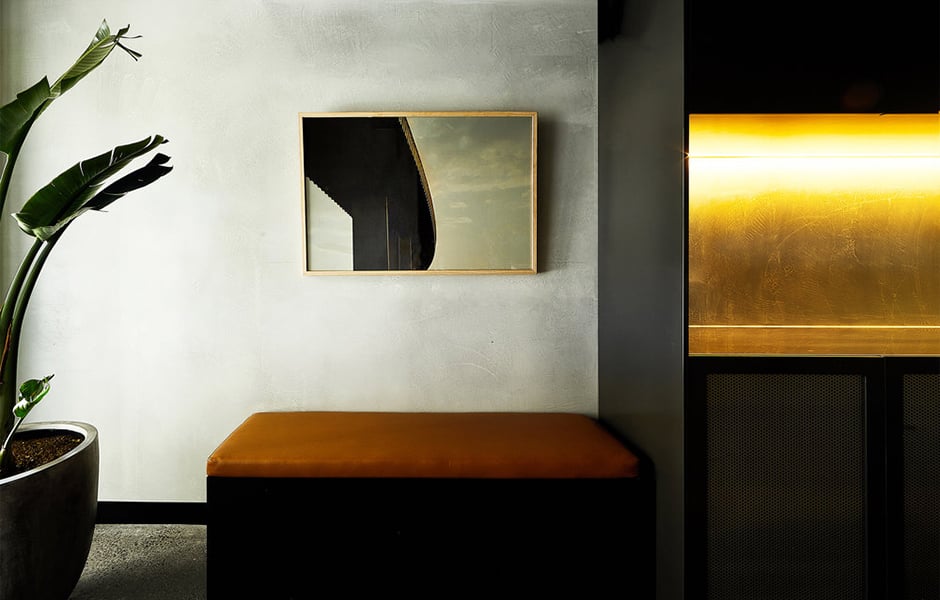
The Communico co-working space designed by Pierce Widera has a classically pared back approach with moments of material surprise. Photo © Jana Langhorst
For each of you, what is something you haven’t designed but would love to?
AP: I would really like to design a yoga or pilates studio. Something involving wellness.
NW: I would love to design an arts space. I think it would be really rewarding to contribute to how a person actually experiences art. Obviously it is a very personal experience, and yet, it's also a very public space, so merging those two together would be very complex but rewarding.
What is currently on the drawing board?
NW: We are working on a few feasibility studies for new projects in workspace design and hospitality. We also have a rooftop function space under construction which is in the same office building we work in.
AP: It’s a few levels above the Communico co-working space that we also designed.
NW: The function space has spectacular city views so it should be cool.
AP: Then there’s the Thornbury project. We wouldn’t mind some new projects though! (laughter). We had a crazy first year so we are hoping to keep the momentum going.
And what was the catalyst for that first big year?
AP: A friend of mine called to see if I would be interested in designing Peaches and I said there is no way I could design it by myself. So Nat and I started discussing the idea of working on it together...
NW: …and we thought why not, let's do it. We didn't plan to start the business, it just happened.
AP: As soon as a few people got wind that we were working on this project together, new opportunities kept arising… so we said, let's make this official! I think fate probably played a large part.
NW: I think it was the best thing that happened to us!
Thank you, great talking with you both!
Pierce Widera won the Emerging Interior Design Practice and a High Commendation, Hospitality Design, for Shinbashi restaurant at the 2109 Australian Interior Design Awards (AIDA). The AIDA program is supported by Space – Australia.
